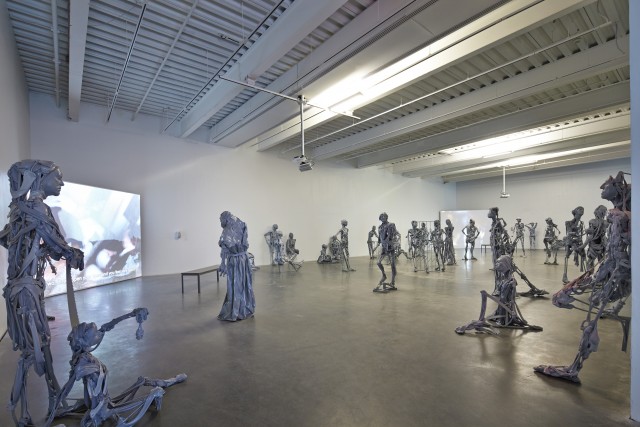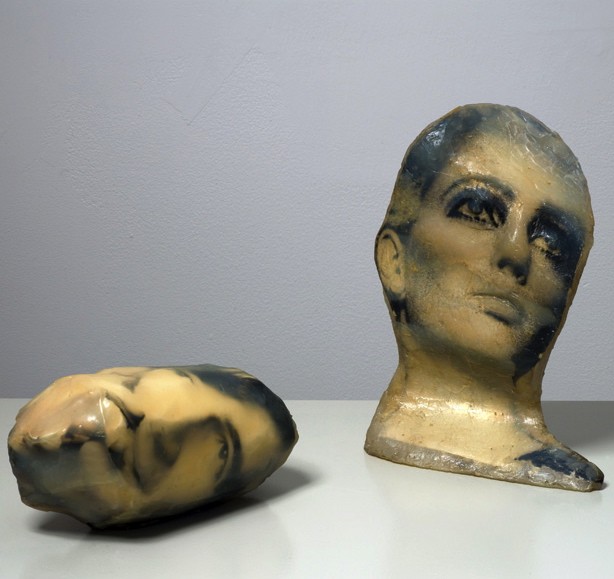
Visitors can contribute to “Draftsmen’s Congress” through Sunday, then take a piece home with them April 23-27 (photo by twi-ny/mdr)
New Museum of Contemporary Art
235 Bowery at Prince St.
Second & fourth floors: Wednesday – Sunday through April 20, $16
Thursday, April 17, 11:00 am – 9:00 pm: one-day exhibition of new sculptures, 231 Bowery, free
April 23-27, “Draftsmen’s Congress” disassembled and distributed to public for free
212-219-1222
www.newmuseum.org
The work of Polish artist Paweł Althamer is very much about collaboration, cooperation, and community, fostering a positive sense of togetherness and sharing without getting treacly. As his first U.S. museum retrospective, “Paweł Althamer: The Neighbors,” winds down at the New Museum, Althamer still has a few surprises in store, as he says in the exhibition catalog, “to share the experience of what we are doing — to see people doing one thing together. . . . The idea is to switch the rules of the game a little so that everybody is included.” Since the show opened back in February, museum visitors and local organizations have been contributing in its evolution, painting on the walls and floors in the participatory, palimpsestual “Draftsmen’s Congress.” The painting will come to a stop on Easter Sunday, but that’s not the end of the piece; from April 23 to 27, the work will be disassembled, cut into pieces, and handed out to visitors free of charge, furthering Althamer’s democratization not only of the creation of art but of its ownership. On April 17, Althamer, whom Joanna Mytkowska’s catalog essay calls “The People’s Artist,” has collaborated with Dogon sculptor Youssouf Dara, the Bowery Mission, and other neighbors for a free one-day exhibition that will be held in the New Museum’s next-door space at 231 Bowery. (Dara’s work can also be seen in the museum’s window display.)

Paweł Althamer’s “Venetians” mix with visitors on the second floor (Courtesy New Museum, New York. Photo: Benoit Pailley)
In addition, the second floor of “The Neighbors” will remain on view through April 20, where museumgoers can walk among dozens of Althamer’s “Venetians,” gray, life-size steel-and-plastic skeletal sculptures of strangers he encountered in the Italian city and made face casts of, with a specific focus on those who often find themselves excluded or marginalized in one way or another. “It’s about being with them and identifying with them,” Althamer tells cocurator Massimiliano Gioni in the catalog. “People are generally scared of outsiders, but if we can confront and then lose our fear, it’s fantastic.” It’s no accident that the figures, which have gathered around eight video screens showing Althamer’s “So-Called Waves and Other Phenomena of the Mind,” in which he films himself in various altered mental states, have an alienlike quality. (The third floor, which closed April 13, featured many sculptural portraits, which he refers to as “totems,” of the artist himself and members of his family, as well as the miniature landscape “Mezalia” and an accompanying film.) Social collaboration is at the heart of Althamer’s practice, and that extends even to museum admission, as visitors can get in free if they bring a new or gently used men’s coat, which will be donated to the Bowery Mission.

